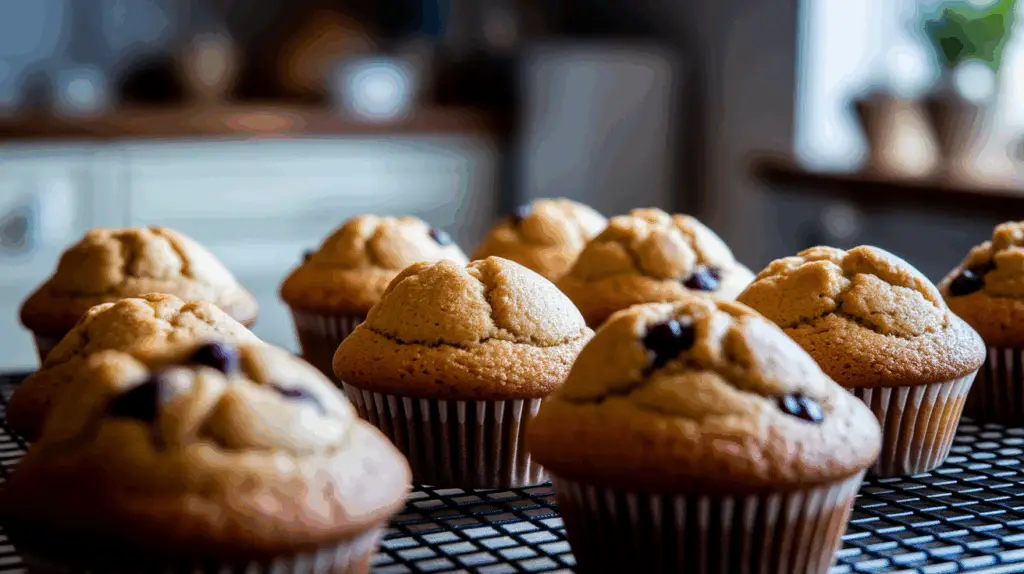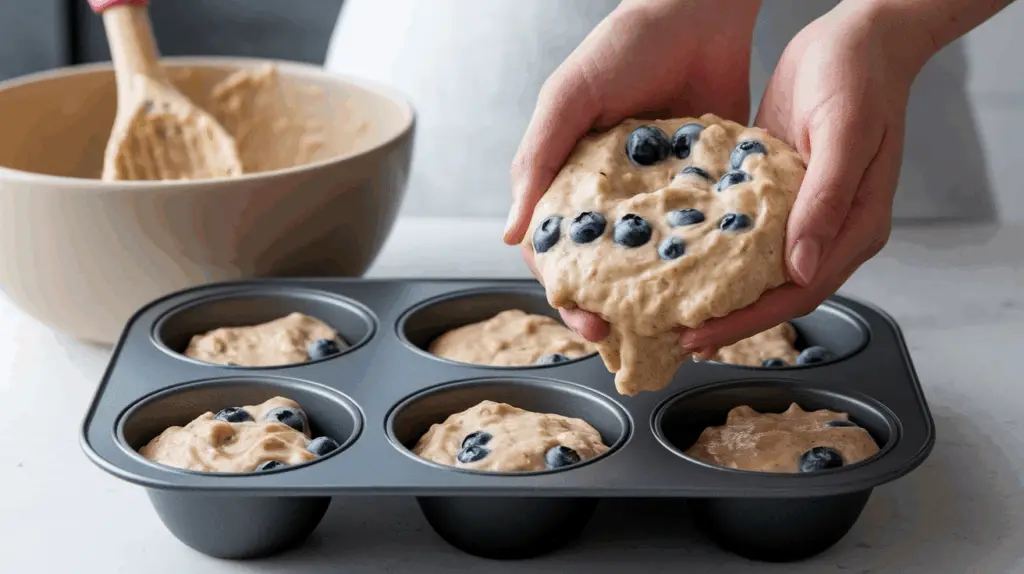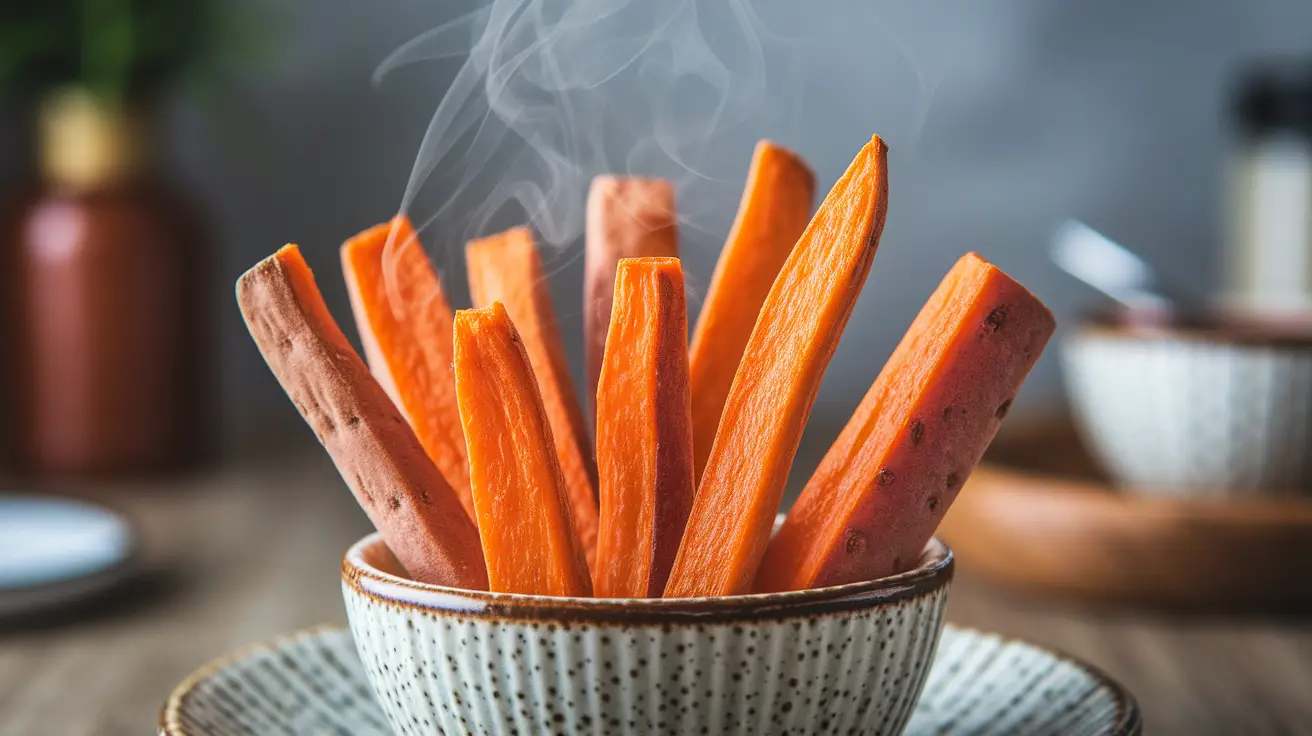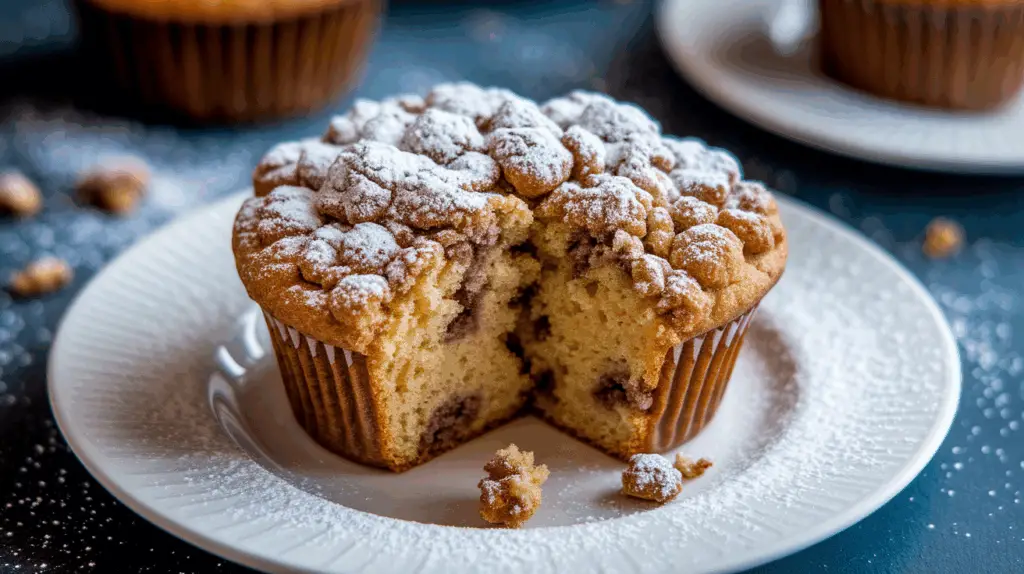Alright, my fellow baking enthusiast, let’s be honest with each other. When you grab a muffin, what’s the first thing you go for? The glorious, domed, golden-brown top, right? The bottom half? Eh, it’s fine, it holds the structure, but it often feels like a necessary evil, sometimes a bit dry, a bit… boring. It’s the unsung hero, constantly overshadowed by its superior sibling. For years, I secretly wished for a world where only muffin tops existed. No more orphaned muffin bottoms languishing in the bread bin! And then, a glorious revelation hit me: how to make muffin tops as their own, standalone, perfect creation. If you, like me, have dreamt of a life filled with nothing but that crispy, tender, flavorful muffin crown, then welcome. You’ve found your people. Let’s ditch the bottoms and dive headfirst into pure muffin top bliss!
Why Only Muffin Tops? The Best Part, Amplified!
Why would anyone dedicate an entire baking session to just the tops? Well, my friend, the answer is simple: because the muffin top is where all the magic truly happens! It’s where the caramelization, the crispness, the maximum flavor concentration resides.
Here’s my rationale for this highly scientific pursuit:
- All Crust, All the Time: The best part of any baked good, IMO, is often the crust. Muffin tops are essentially all crust, meaning maximum flavor and texture in every single bite.
- No More Dry Bottoms: Let’s face it, getting a muffin perfectly baked from top to bottom is a delicate balance. Sometimes the tops are golden, but the bottoms are still pale, or the bottoms are perfect, but the tops are a little too done. Making just the tops eliminates this conundrum entirely. You get perfect doneness all around.
- Optimal Ratio: Every muffin top offers the perfect ratio of crispy edges to tender, fluffy interior. It’s pure, unadulterated muffin goodness without the structural integrity (or dryness) of the bottom.
- Less “Waste” (If You’re Picky Like Me): If you’re the kind of person who leaves the muffin bottom untouched, this method is revolutionary. No more guilt over leaving a perfectly good piece of baked goods behind!
- Pure, Unadulterated Joy: Honestly, there’s just something inherently fun and satisfying about making only the best part. It’s a small act of culinary rebellion. Have you ever seen someone frown at a muffin top? I thought not. 🙂
The Essential Equipment: Your Muffin Top Arsenal
You might think you need some super specialized gadgetry for this, but actually, you have a few options. Some are purpose-built, while others are clever hacks using what you already own.
Dedicated Muffin Top Pans: The Dream Tool
This is, admittedly, the easiest way to go. These pans look like a regular muffin tin, but they only have shallow indentations, almost like giant cookie sheets with divots.
- Pros: They are designed specifically for the job, ensuring even heat distribution and perfect muffin-top shapes. They typically make 6 or 12 tops.
- Cons: It’s a single-use pan, which might not appeal to minimalists.
The Baking Sheet & Cookie Cutter Hack
Don’t want another pan? No problem! You can get surprisingly good muffin tops with just a baking sheet and a large round cookie cutter (or even a mason jar rim).
- Grease a large baking sheet or line it with parchment paper.
- Use a large round cookie cutter (about 3-4 inches in diameter) as a guide. Spoon your muffin batter inside the cutter on the baking sheet.
- Carefully lift the cutter, leaving a neat disc of batter. Repeat, leaving plenty of space between each.
- Pros: Uses existing equipment, highly customizable in size.
- Cons: Can be a bit messier to scoop, and the edges might spread a bit more than in a dedicated pan.
Standard Muffin Tin with a Foil Trick: A Hybrid Approach
This is a fun trick if you only have a regular muffin tin and want to make tops without extra purchases.
- Place paper muffin liners in only every other muffin cup.
- In the empty cups, crumple a piece of aluminum foil into a tight ball and place it in the bottom of the liner. This creates a raised “platform.”
- Spoon your muffin batter over the foil ball in the liner, filling it only about halfway, ensuring the batter sits above the rim of the actual muffin cup. The batter will spread outward, creating a top.
- Pros: Uses standard equipment, gives a slightly more traditional muffin “crown” shape.
- Cons: Can be a bit finicky to get the foil height right, and you’ll make fewer tops per batch.
Key Ingredients for Top-Tier Muffin Tops
Muffin tops use almost all the same ingredients as regular muffins, but the consistency of your batter (and thus, your ratios) is a bit more important to ensure they spread and bake correctly without becoming flat disks or oddly shaped lumps.
Flour & Leavening: The Lift You Need
- All-Purpose Flour: Your standard workhorse. It provides the structure.
- Baking Powder & Baking Soda: These are your leavening agents. Baking powder provides initial lift, and baking soda (when combined with an acid like buttermilk or brown sugar) creates more lift and a tender crumb. A good balance of both is crucial for that puffy dome. Don’t let your leavening agents be old; stale baking powder equals sad, flat tops!
Sugar & Fat: For Tenderness and Crisp
- Sugar: Sweetens the muffin tops and also helps with browning and tenderness. A combination of granulated sugar and brown sugar (for moisture and a caramel note) is often ideal.
- Fat (Butter or Oil): Adds richness, moisture, and ensures a tender crumb. Melted butter often gives a richer flavor, while oil can make them incredibly moist. My preference is melted butter for classic flavor.
Liquid & Eggs: Moisture and Structure
- Liquid (Milk, Buttermilk, Yogurt): Provides moisture and helps activate the leavening. Buttermilk or yogurt adds a lovely tang and reacts well with baking soda for extra lift.
- Eggs: Act as a binder, provide richness, and contribute to the overall structure and rise.
Flavorings: Endless Possibilities
This is where you make them yours!
- Classic Add-Ins:
- Chocolate Chips: Mini or regular, any kind!
- Fresh Berries: Blueberries, raspberries, chopped strawberries. Pat them dry first!
- Chopped Nuts: Walnuts, pecans.
- Lemon Zest: Adds a bright, fresh flavor.
- Spices: Cinnamon, nutmeg, pumpkin pie spice.
- Streusel Topping: A crumbly mix of butter, flour, sugar, and sometimes cinnamon. This adds incredible texture and flavor to the top. Highly recommended for a bakery-style muffin top.
Crafting the Perfect Muffin Top Batter
The mixing technique is super important for muffins, and even more so for just the tops, as you want a tender crumb.
- Separate Dry & Wet: In one large bowl, whisk together all your dry ingredients (flour, leavening, salt, sugar, spices). In another bowl, whisk together all your wet ingredients (melted butter/oil, eggs, milk/buttermilk, vanilla extract).
- Combine Gently: Pour the wet ingredients into the dry ingredients.
- Mix Just Until Combined: This is the golden rule of muffin making. Mix only until the dry ingredients are just moistened and no streaks of dry flour remain. Lumps are totally okay! Overmixing develops gluten, which makes muffins tough and chewy – the exact opposite of what we want. Seriously, stop mixing before you think it’s fully mixed. I learned this the hard way with many a tough muffin!
The resulting batter should be thick, not runny. A thick batter will help ensure you get that domed, luscious top rather than a flat, pancake-like disc.
The Baking Process: Heat, Time, and Golden Perfection
Now for the heat! Getting the temperature and timing right is crucial for that perfect muffin top.
Preheat Your Oven: No Cold Starts!
Just like with almost any baking project, preheating your oven is non-negotiable. A hot oven ensures that immediate burst of heat, which helps the leavening agents do their job quickly, giving your muffin tops a good initial rise and setting that beautiful dome. Preheat your oven to 400°F (200°C).
Filling the Pan: The Scoop & Spread Method
This varies slightly depending on your pan type:
- Dedicated Muffin Top Pan: Lightly grease the shallow wells. Scoop about 2-3 tablespoons of batter into each well. The batter should fill the well and create a mound. You can gently spread it slightly if needed, but the batter should be thick enough to hold its shape.
- Baking Sheet & Cookie Cutter Hack: As described above, use your cookie cutter to create neatly mounded discs of batter. You might need slightly more batter per top here, maybe 3-4 tablespoons, as it will spread more freely.
- Standard Muffin Tin with Foil: Scoop enough batter over the foil ball to create a generous mound that extends significantly above the rim of the muffin cup.
Temperature and Timing: Quick & Hot
Muffin tops cook quickly due to their shallower nature. The high initial temperature helps them puff up rapidly.
- Bake at 400°F (200°C) for 12-18 minutes. The exact time will depend on your oven, the thickness of your tops, and your specific recipe.
The Doneness Test: Golden and Springy
Your muffin tops are ready when:
- They are beautifully golden brown on the edges and top.
- A wooden skewer or toothpick inserted into the thickest part comes out clean (no wet batter).
- They feel springy to the touch when you gently press the center.
Immediately remove the muffin tops from the pan and transfer them to a wire cooling rack. This prevents the bottoms from getting soggy from residual heat.
Troubleshooting Muffin Top Troubles
Even seasoned bakers hit a snag sometimes. Don’t worry, we’ve all been there! My first attempt at muffin tops with a regular tin resulted in flat, sad discs. Live and learn!
- Flat, Pancake-Like Tops:
- Culprit: Overmixed batter (gluten developed too much), old leavening agents, oven not hot enough, or batter too thin.
- Fix: Mix less, check leavening dates, preheat properly, and ensure your batter is thick.
- Burnt Edges, Undercooked Center:
- Culprit: Oven too hot, or pieces are too thick for the cook time.
- Fix: Ensure proper oven temperature (an oven thermometer helps!). If using a dedicated pan, ensure wells aren’t overfilled.
- Sticking to the Pan:
- Culprit: Not enough grease in the pan, or you didn’t let them cool slightly before attempting to remove.
- Fix: Grease generously, or use a non-stick spray. Let them cool in the pan for 5 minutes before transferring to a rack.
- Too Dry:
- Culprit: Overbaking.
- Fix: Reduce cooking time by a minute or two. Check for doneness as soon as they start to brown.
Flavor Explosions: Muffin Top Variations Galore
Once you nail the basic technique, the world of muffin top flavors opens up!
- Classic Blueberry: Fold in 1 cup of fresh or frozen blueberries (toss frozen berries in 1 tbsp flour to prevent sinking).
- Decadent Double Chocolate: Add 1/2 cup cocoa powder to the dry ingredients and fold in 1 cup of chocolate chips.
- Cinnamon Streusel: Prepare a streusel topping (mix 1/2 cup flour, 1/4 cup brown sugar, 1 tsp cinnamon, 4 tbsp melted butter until crumbly). Sprinkle generously over batter before baking.
- Lemon Poppy Seed: Add 1 tbsp lemon zest and 1 tbsp poppy seeds to the batter.
- Savory Cheese & Herb: Omit sugar, add 1/2 cup shredded cheddar cheese, 2 tbsp chopped chives or parsley, and a pinch of black pepper. Great with breakfast!
Experiment with spices, extracts, and different fruits. The muffin top is your canvas!
Frequently Asked Questions
- What is a muffin top? A muffin top refers specifically to the highly desired, domed, and often crispy or crumbly upper portion of a muffin, without the denser, paper-lined bottom part. People bake just the tops to enjoy only the best part of a muffin.
- What kind of pan do you use to make muffin tops? You can use a dedicated muffin top pan, which features shallow, wide wells. Alternatively, you can use a standard baking sheet with a cookie cutter for shaping, or even a regular muffin tin by stuffing empty cups with foil to create a raised platform for the batter.
- Why are my muffin tops flat? Muffin tops often turn flat due to overmixing the batter, which develops too much gluten, making them tough and preventing a good rise. Other reasons include using old or inactive leavening agents (baking powder/soda), or the oven not being preheated hot enough initially.
- How do you get a domed muffin top? To get a domed muffin top, ensure your batter is thick, avoid overmixing (lumps are fine!), use fresh and active leavening agents, and preheat your oven to a high temperature (like 400°F/200°C) before baking. This initial burst of heat helps the muffin tops rise rapidly.
- What’s the ideal baking temperature for muffin tops? The ideal baking temperature for muffin tops is typically 400°F (200°C). This high heat promotes a quick rise and helps create a crispy, golden-brown exterior.
- How long do you bake muffin tops? Muffin tops typically bake for 12-18 minutes at 400°F (200°C), depending on their thickness and your specific oven. They are done when they are golden brown on the edges and springy to the touch in the center, and a skewer inserted comes out clean.
- Can I use any muffin recipe to make just the tops? Yes, you can adapt most standard muffin recipes to make just the tops. The key is to ensure the batter is on the thicker side for better doming, and to adjust your baking time and temperature to account for the shallower depth of the muffin tops compared to full muffins.
Conclusion
So there you have it, my friend! The complete, no-holds-barred guide on how to make muffin tops. No more compromising, no more sad muffin bottoms. You now possess the knowledge and tools to create batches of pure, unadulterated muffin crown bliss. It’s a simple, incredibly satisfying baking project that delivers maximum flavor and texture. Go ahead, choose your favorite muffin flavor, get those pans ready, and prepare to elevate your snacking game. Your inner muffin top enthusiast will thank you! Happy baking! 🙂





